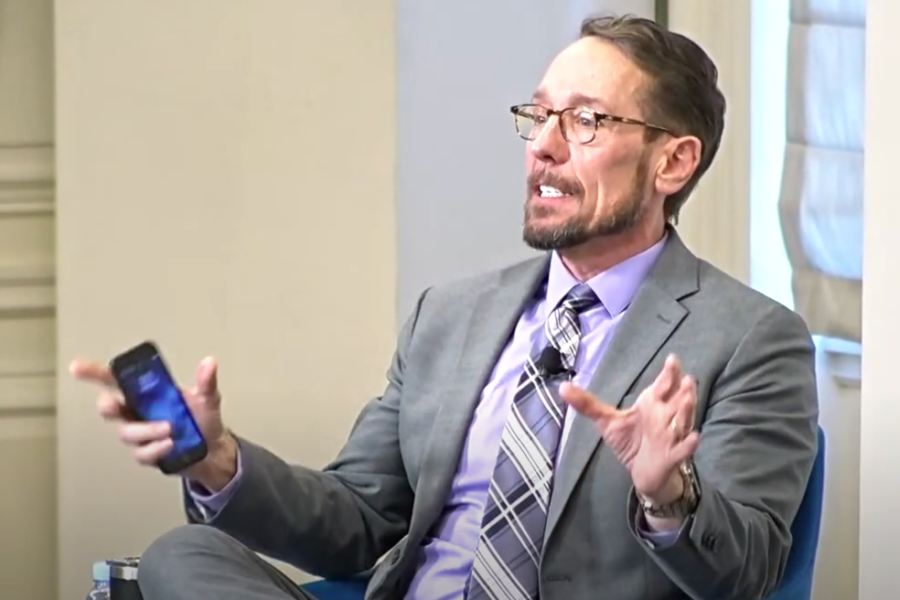Companies in the defense industry believe they’re better positioned than the military services to help the Defense Department link its data together as part of the joint all-domain command and control concept.
The chief technology officers of Lockheed Martin and Northrop Grumman pointed out how their companies already work with all the services and the Intelligence Community. In an event livestreamed April 19 by the American Enterprise Institute, they said their own internal research and development to link their two companies’ platforms could pay off for the government.
Northrop Grumman’s Scott Stapp thinks of JADC2 as “the internet of warfighting,” akin to how people command and control their day-to-day lives via smartphone.
“The idea is, ‘How do you connect all your pieces so that the data flows seamlessly from any element to anything else,’” Stapp said. “They used to talk about [it being] ‘any sensor to any shooter.’ And we’ve kind of started morphing that. It’s really about the right data to the right shooter. … Weapons don’t care where the data comes from. What they need is guidance on where to go.”
Over the short term, between now and DOD’s initial time horizon of 2027, Stapp said getting JADC2 to work “means duct-taping and Band-aiding the systems you have today, tying them together so they have much better data flow, so you can get much better decision authority out of that.” Then comes “looking at how future programs will then go back and tie into that architecture.”
“If you hear [Air Force] Secretary [Frank] Kendall talk, it’s really a now-to-’27 kind of timeframe when they look at China,” Stapp said. “And then ’27 and beyond. Well, now to ’27 means there are probably no new programs of record. What you’ve got, you’re going to take to the fight.”
The two CTOs acknowledged meeting regularly with other defense industry counterparts to talk about situations in which they want to compete or collaborate.
“Setting this fabric and this architecture for JADC2 is an area that we actually really need to collaborate on,” Stapp said.
Steve Walker of Lockheed Martin estimated that the military already has 80 percent of the weapons it will have 10 years from now.
“But if you can build more of a system-of-systems approach to warfighting, the chance you’re going to be able to add effectors—say, unmanned systems—to that mix is greater. The ability to upgrade technology at the pace of technology is greater.”
Walker mentioned how the two companies “have talked about how to use your assets with our assets and provide that full picture.
“We just need to get that story, I think, more over to the DOD side,” he said.
Stapp of Northrop Grumman commended the Joint Staff’s work on the JADC2 implementation plan, announced in March, saying, “They’ve set the vision of what JADC2 really needs to look like.
“The real question is can the services pick that ball up and roll tin to actually fulfill that vision. [But] the services don’t really understand the tools in all the other services.”
However, if the industry starts “doing that on our own dime, … [then] you’ve started to connect the services together whether they knew it or not,” Stapp said.
